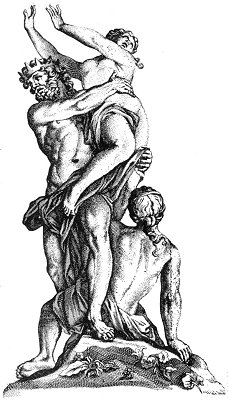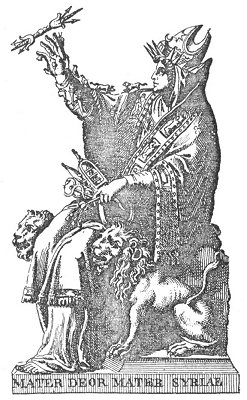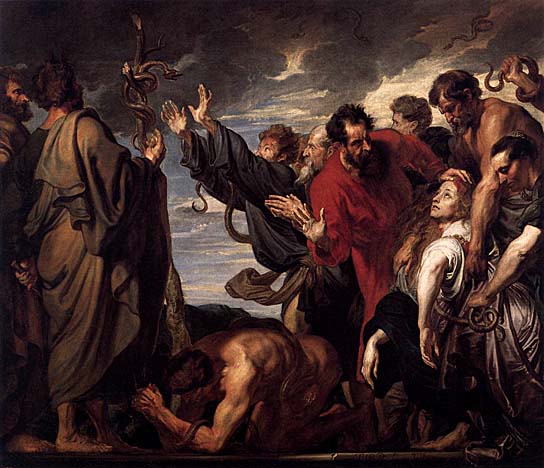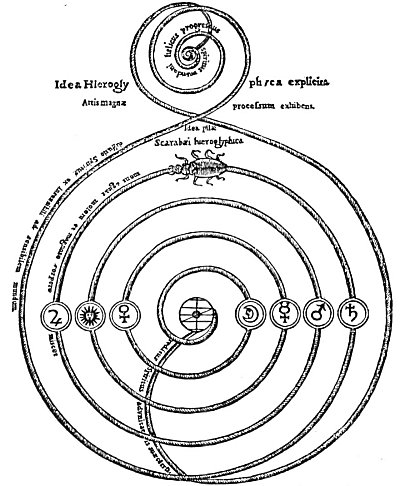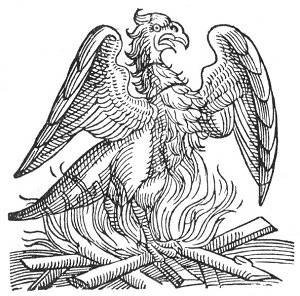The Gnostic viewpoint concerning the Christ is well worthy of consideration. This order claimed to be the only sect to have actual pictures of the Divine Syrian. While these were, in all probability, idealistic conceptions of the Savior based upon existing sculpturings and paintings of the pagan sun gods, they were all Christianity had. To the Gnostics, the Christ was the personification of Nous, the Divine Mind, and emanated from the higher spiritual Æons. He descended into the body of Jesus at the baptism and left it again before the crucifixion. The Gnostics declared that the Christ was not crucified, as this Divine Nous could not suffer death, but that Simon, the Cyrenian, offered his life instead and that the Nous, by means of its power, caused Simon to resemble Jesus. Irenæus makes the following statement concerning the cosmic sacrifice of the Christ:
“When the uncreated, unnamed Father saw the corruption of mankind, He sent His firstborn, Nous, into the world, in the form of Christ, for the redemption of all who believe in Him, out of the power of those that have fabricated the world (the Demiurgus, and his six sons, the planetary genii). He appeared amongst men as the Man Jesus, and wrought miracles.” (See King’s Gnostics and Their Remains.)
The Gnostics divided humanity into three parts: those who, as savages, worshiped only the visible Nature; those who, like the Jews, worshiped the Demiurgus; and lastly, themselves, or others of a similar cult, including certain sects of Christians, who worshiped Nous (Christ) and the true spiritual light of the higher Æons.
After the death of Basilides, Valentinus became the leading inspiration of the Gnostic movement. He still further complicated the system of Gnostic philosophy by adding infinitely to the details. He increased the number of emanations from the Great One (the Abyss) to fifteen pairs and also laid much emphasis on the Virgin Sophia, or Wisdom. In the Books of the Savior, parts of which are commonly known as the Pistis Sophia, may be found much material concerning this strange doctrine of Æons and their strange inhabitants. James Freeman Clarke, in speaking of the doctrines of the Gnostics, says: “These doctrines, strange as they seem to us, had a wide influence in the Christian Church.” Many of the theories of the ancient Gnostics, especially those concerning scientific subjects, have been substantiated by modern research. Several sects branched off from the main stem of Gnosticism, such as the Valentinians, the Ophites (serpent worshipers), and the Adamites. After the third century their power waned, and the Gnostics practically vanished from the philosophic world. An effort was made during the Middle Ages to resurrect the principles of Gnosticism, but owing to the destruction of their records the material necessary was not available. Even today there are evidences of Gnostic philosophy in the modern world, but they bear other names and their true origin is not suspected. Many of the Gnostic concepts have actually been incorporated into the dogmas of the Christian Church, and our newer interpretations of Christianity are often along the lines of Gnostic emanationism.
THE MYSTERIES OF , ASAR-HAPI
, ASAR-HAPI
The identity of the Greco-Egyptian Serapis (known to the Greeks as Serapis and the Egyptians as Asar-Hapi) is shrouded by an impenetrable veil of mystery. While this deity was a familiar figure among the symbols of the secret Egyptian initiatory rites, his arcane nature was revealed only to those who had fulfilled the requirements of the Serapic cultus. Therefore, in all probability, excepting the initiated priests, the Egyptians themselves were ignorant of his true character. So far as known, there exists no authentic account of the rites of Serapis, but an analysis of the deity and his accompanying symbols reveals their salient points. In an oracle delivered to the King of Cyprus, Serapis described himself thus:
”A god I am such as I show to thee, The Starry Heavens are my head, my trunk the sea, Earth forms my feet, mine ears the air supplies, The Sun’s far-darting, brilliant rays, mine eyes.”
Several unsatisfactory attempts have been made to etymologize the word Serapis. Godfrey Higgins notes that Soros was the name given by the Egyptians to a stone coffin, and Apis was Osiris incarnate in the sacred bull. These two words combined result in Soros-Apis or Sor-Apis, “the tomb of the bull.” But it is improbable that the Egyptians would worship a coffin in the form of a man.

Moe is the founder of GnosticWarrior.com. He is a father, husband, author, martial arts black belt, and an expert in Gnosticism, the occult, and esotericism.

